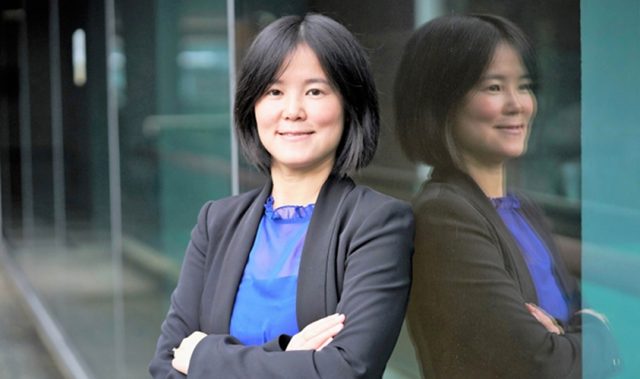
AsianScientist (Sep. 1, 2014) – By Grace Chua – With trillions of dollars invested in mutual funds and hedge funds globally, a regulatory policy that has even the smallest impact on a fund’s performance can make millions of dollars’ worth of difference.
Assistant Professor Tang Yuehua, of Singapore Management University’s Lee Kong Chian School of Business, examines the impact of regulatory policies, particularly those that dictate what information funds need to disclose and when. His work focuses on mutual funds, a form of collective investment vehicle that pools money from investors and are usually open to the general public, as well as hedge funds which typically pool money from bigger institutional investors and high net worth individuals.
“Nowadays, mutual funds and hedge funds are big players in the market, managing trillions of dollars. In the United States (US), mutual funds’ assets under management are US$15 trillion in 2013, almost as large as the annual Gross Domestic Product (GDP) of the US. About half of the households in the US have some money in mutual funds, and many of them invest through 401Ks [a form of pension accounts]. Because it’s so relevant to investors, the regulators have to step in and make sure the market is in order so that it’s fair to all investors,” Professor Tang explains.
The transparency and performance trade-off
One aspect that regulators are concerned with is the issue of how often mutual funds should disclose what stocks are in their portfolios. In 2004, a US Securities Exchange Commission policy change required mutual funds to disclose their holdings quarterly instead of semi-annually. This change served as a natural experiment for academic studies. Using data from before and after the change, Professor Tang and his co-authors found that on the one hand, more frequent disclosure improved stock liquidity, but on the other hand, it actually hurt the performance of well-performing mutual funds by two to five percent on an annualised basis.
“Regulators want mutual funds as well as other asset managers like hedge fund firms to disclose their portfolio holdings regularly—quarterly or semi-annually. There are a number of implications to this. The primary goal of this regulation is to improve transparency, so that investors can see what they have,” he says.
“However, if I am a good asset manager, I do a lot of research on many companies and learn some info that is unique to me, which creates returns for investors. But if the regulators ask me to disclose my holdings, it’s like disclosing my secrets. More transparency is good in one way—it improves the liquidity of the stocks being disclosed. But for informed mutual fund managers, it hurts their performance; it’s like disclosing industrial secrets.”
As a compromise between transparency and performance, mutual funds have a disclosure time lag of 60 days. “Assuming it is March 31,” Professor Tang says, “Funds have 60 days to disclose their holdings as of March 31.”
Fund managers’ incentives
Apart from the frequency of disclosures, how mutual fund management companies are paid is also subjected to regulations. According to federal law, any incentive fee based on investment performance received by fund management companies must be symmetric relative to a benchmark. In practice, fund management companies are generally compensated based on how much assets they manage, rather than a fund’s investment performance.
In a working paper with colleagues from Spain and the US, Professor Tang examined the compensation of individual fund portfolio managers to find out whether paying bonuses based on the investment performance of the funds they manage would actually lead to better performance.
“Our research showed that 75 percent of portfolio managers in the US mutual fund industry received bonuses depending on the performance of the fund from their fund management companies. The implication was that investment performance incentives did exist in the mutual fund industry. We were the first to find that the performance incentive did exist, and that funds with performance incentives delivered better performance.”
But with larger incentives, might fund managers be pushed to take more risks? Professor Tang’s research suggests that this strongly depends on the time-scale of the incentive.
“The longer the performance evaluation period, the less risk-taking is incentivised. If I’m paid based only on annual performance, I wouldn’t care what the performance is next year, so my incentive is just to gamble. But if I am paid over a longer horizon, say three or five years, then my incentive to gamble is lesser,” he says.
Spotlight on Asian markets
Taking his work forward, Professor Tang is keen to focus on asset managers, and how the Asian context affects the behaviour of asset managers including mutual fund managers, an area that has so far been limited by a lack of data.
“The reason most researchers are focused on the US is because the US has very good research data over a long time series of 30 to 40 years. There are also thousands of mutual funds and hedge funds. If you want to do research on Asian-based mutual or hedge funds, it’s not easy to get good data.”
“It’s definitely improving but it has not reached the same stage as in the US. First of all, the data doesn’t go back long enough. It’s shorter because of the history of these developing economies. And different countries in Asia have different regulatory regimes, which makes it more challenging as well.”
Drawn to SMU by its research track record and the presence of scholars like Professor Melvyn Teo who has an established record of research on hedge funds and mutual funds, Professor Tang hopes to collaborate with SMU colleagues on Asian-centric studies.
“I want to continue to understand the incentives and performance of asset managers. A lot of new hedge funds have started, and some of these hedge fund managers came from reputable hedge fund firms with stellar track records. We’re interested in whether these protégé managers are better in generating alpha, and whether they trade similar securities as the hedge fund firm they came from,” he says.
“Ultimately, my goal is to provide more in-depth understanding of the asset management industry to help investors maximise their gains.”
Asian Scientist Magazine is a media partner of the Singapore Management University Office of Research.
——–
Copyright: SMU Office of Research. Read the original article here; Photo: Cyril Ng.
Disclaimer: This article does not necessarily reflect the views of AsianScientist or its staff.












